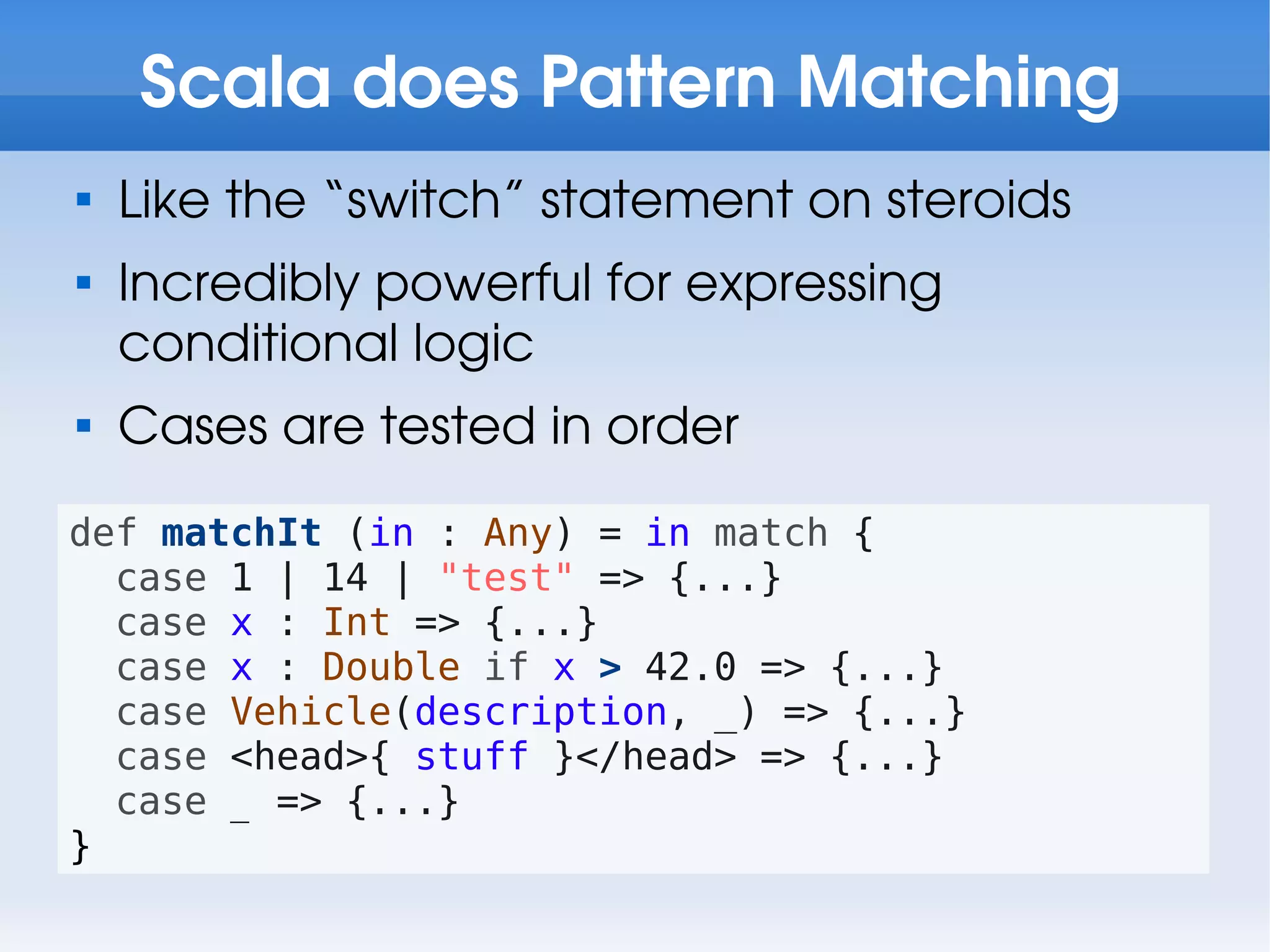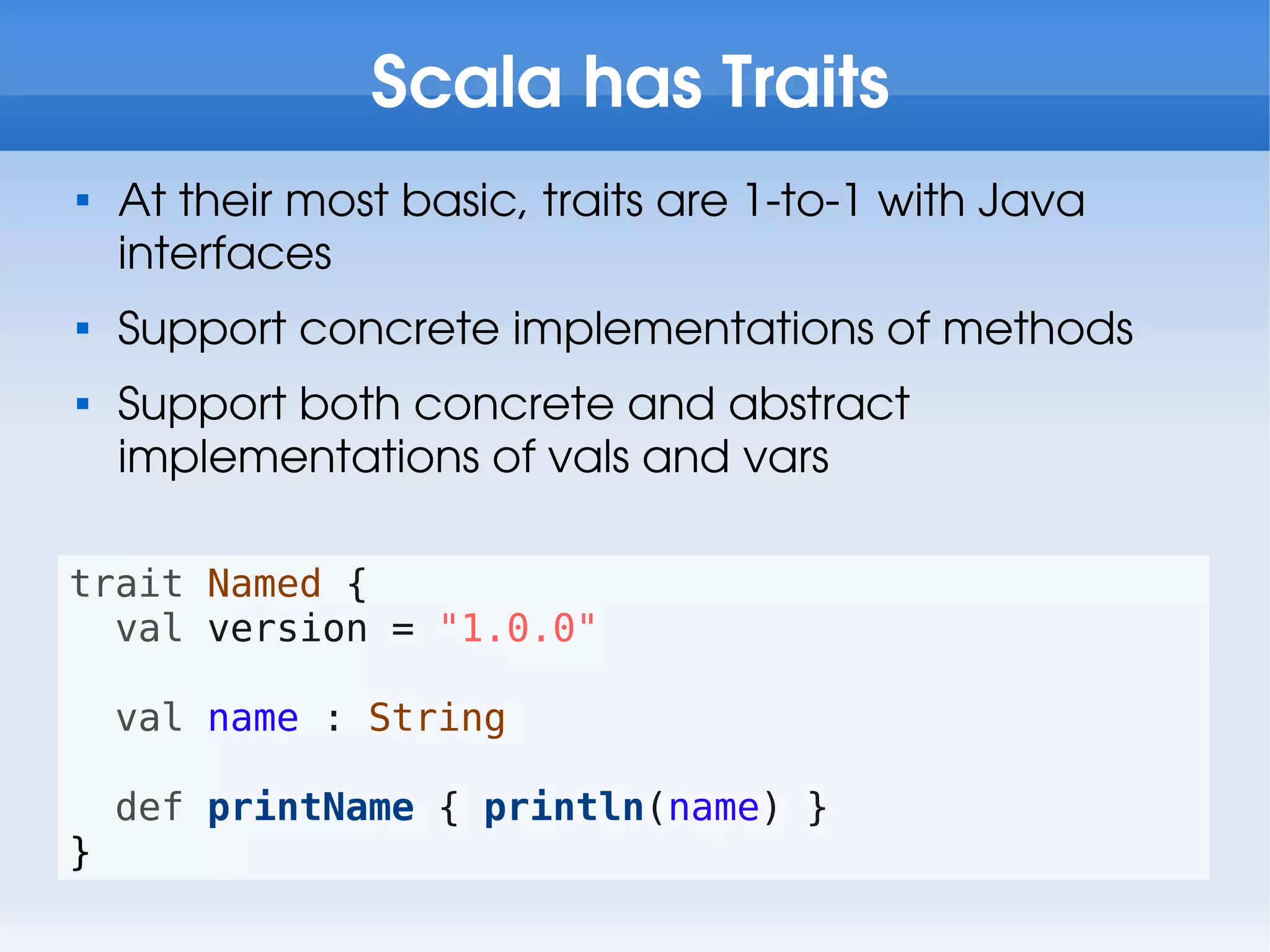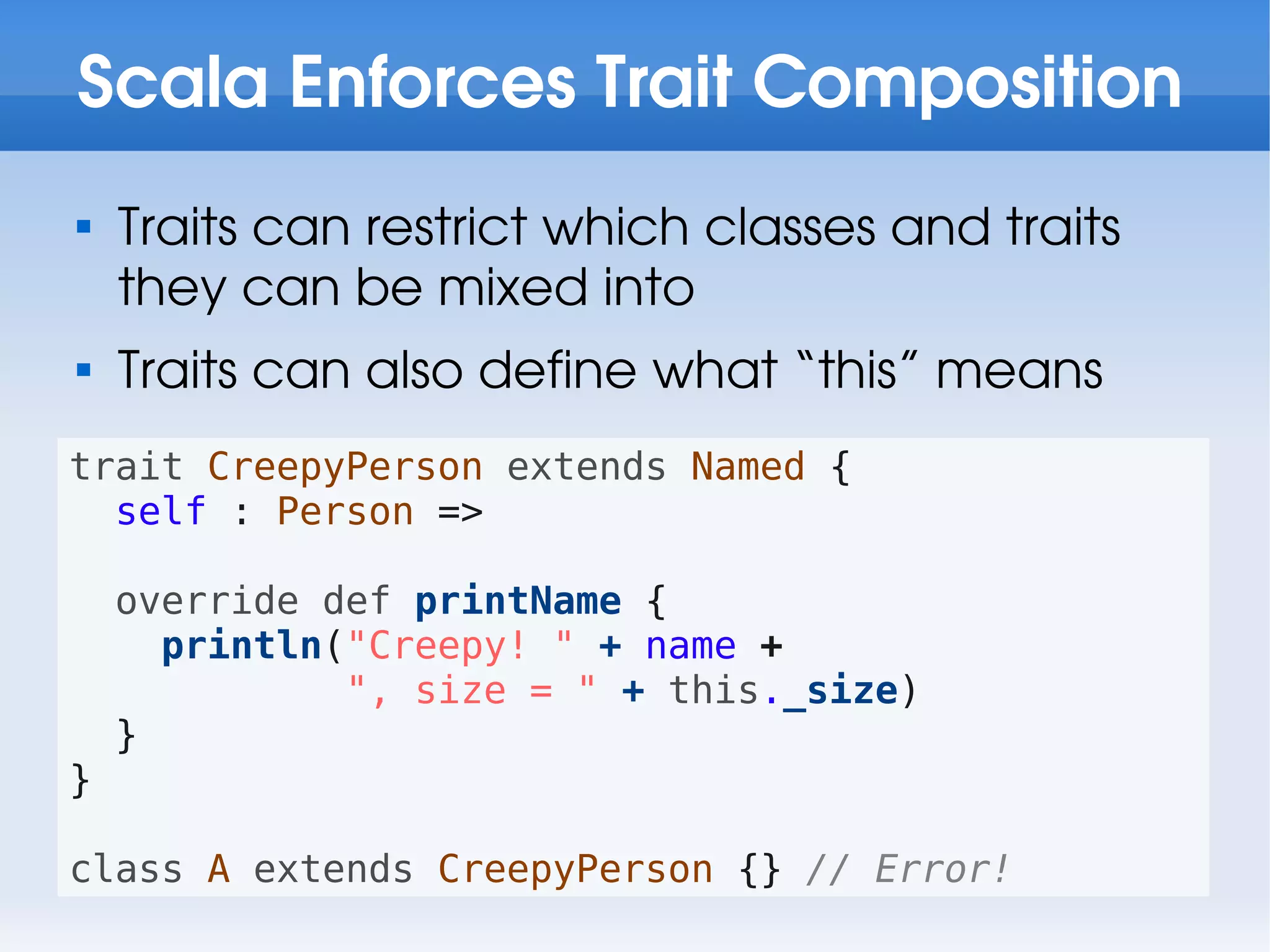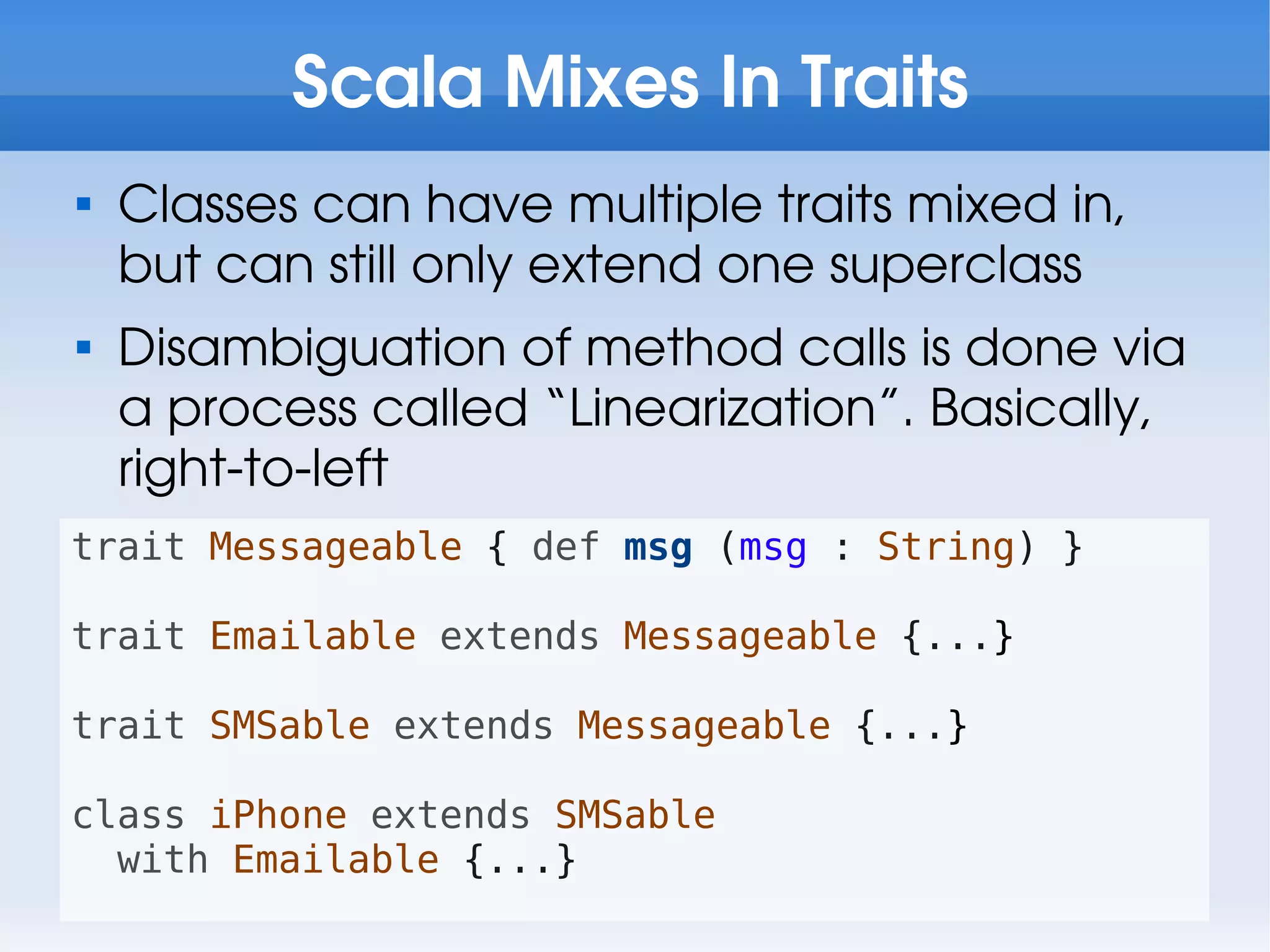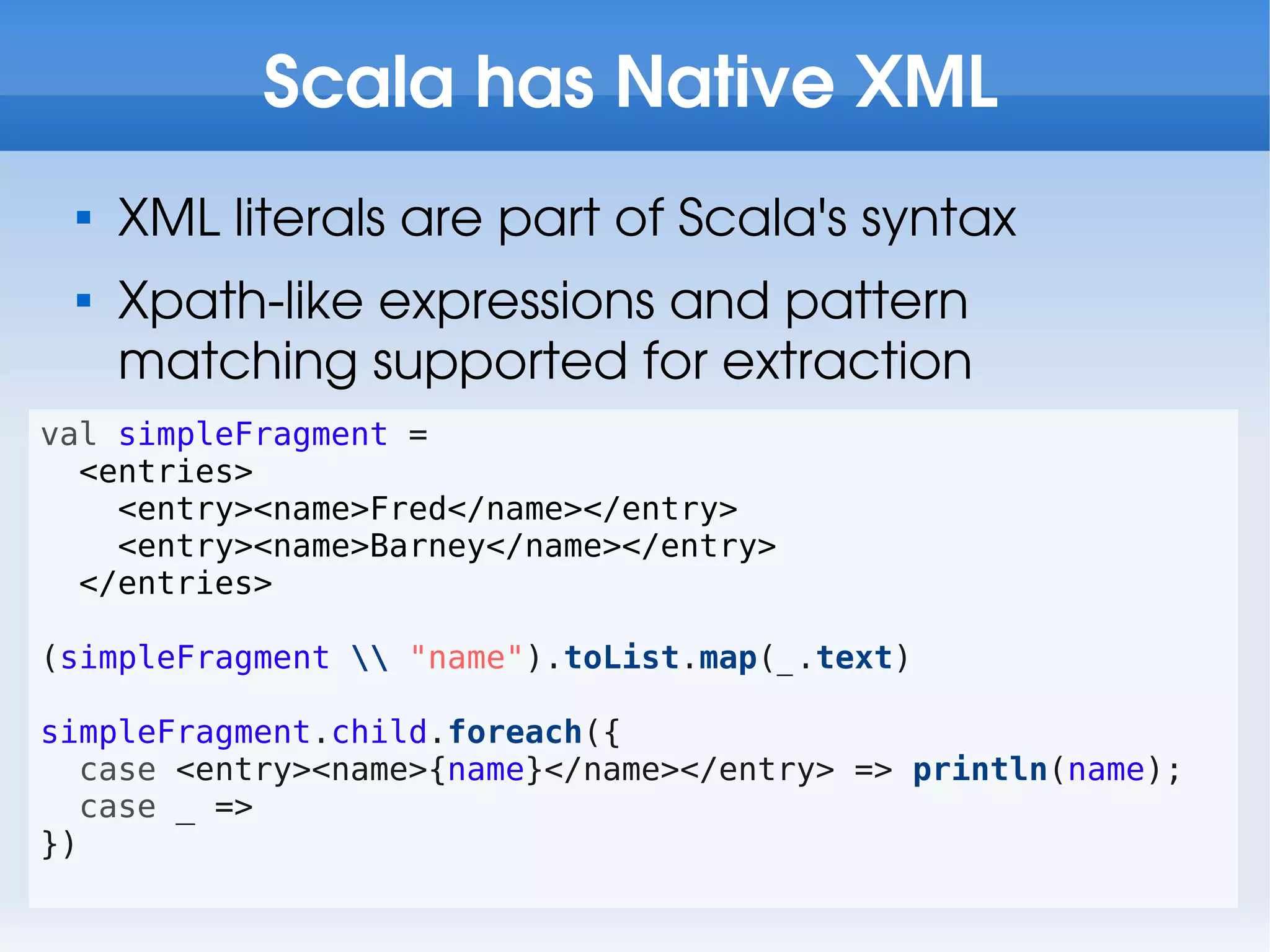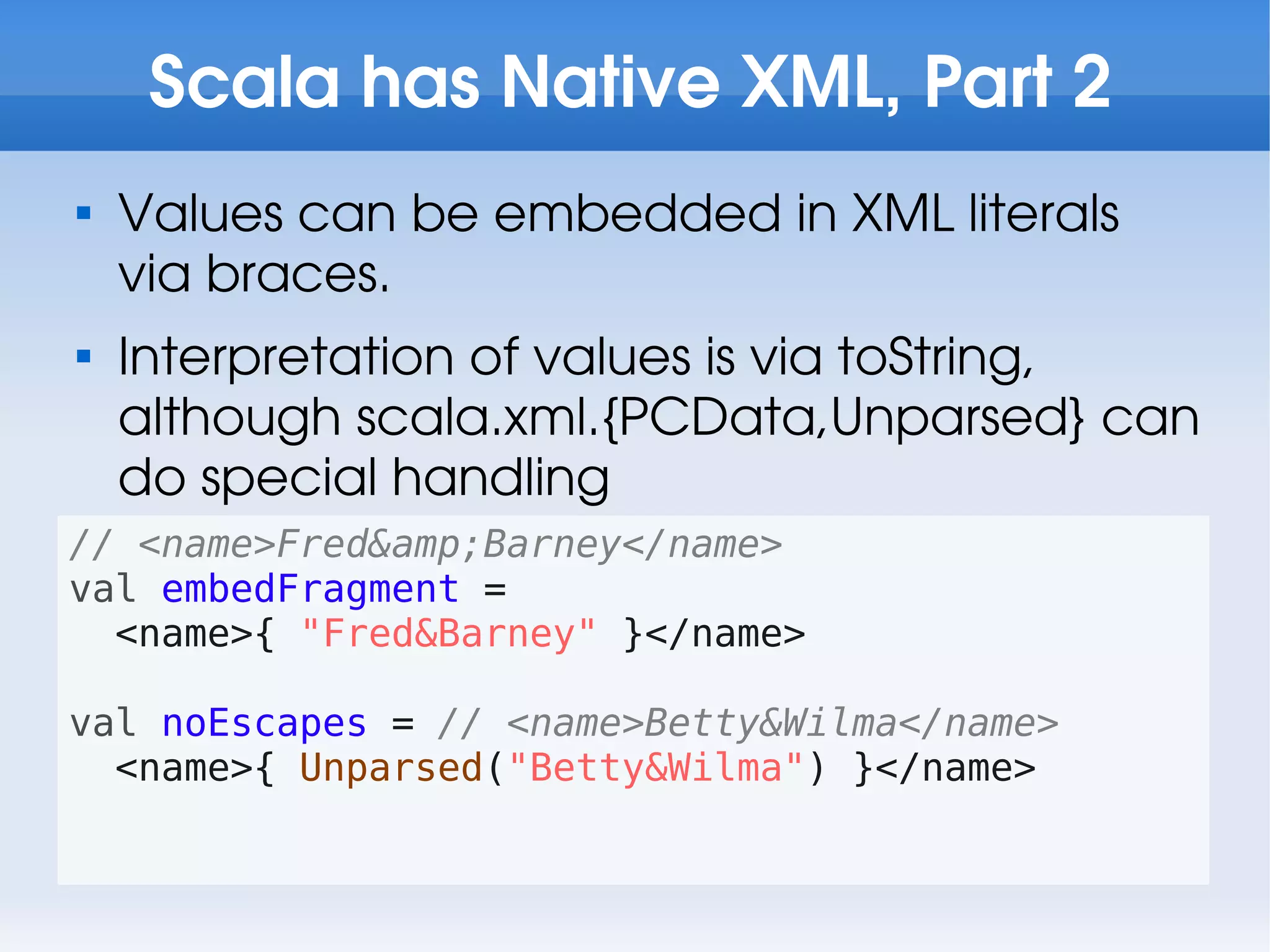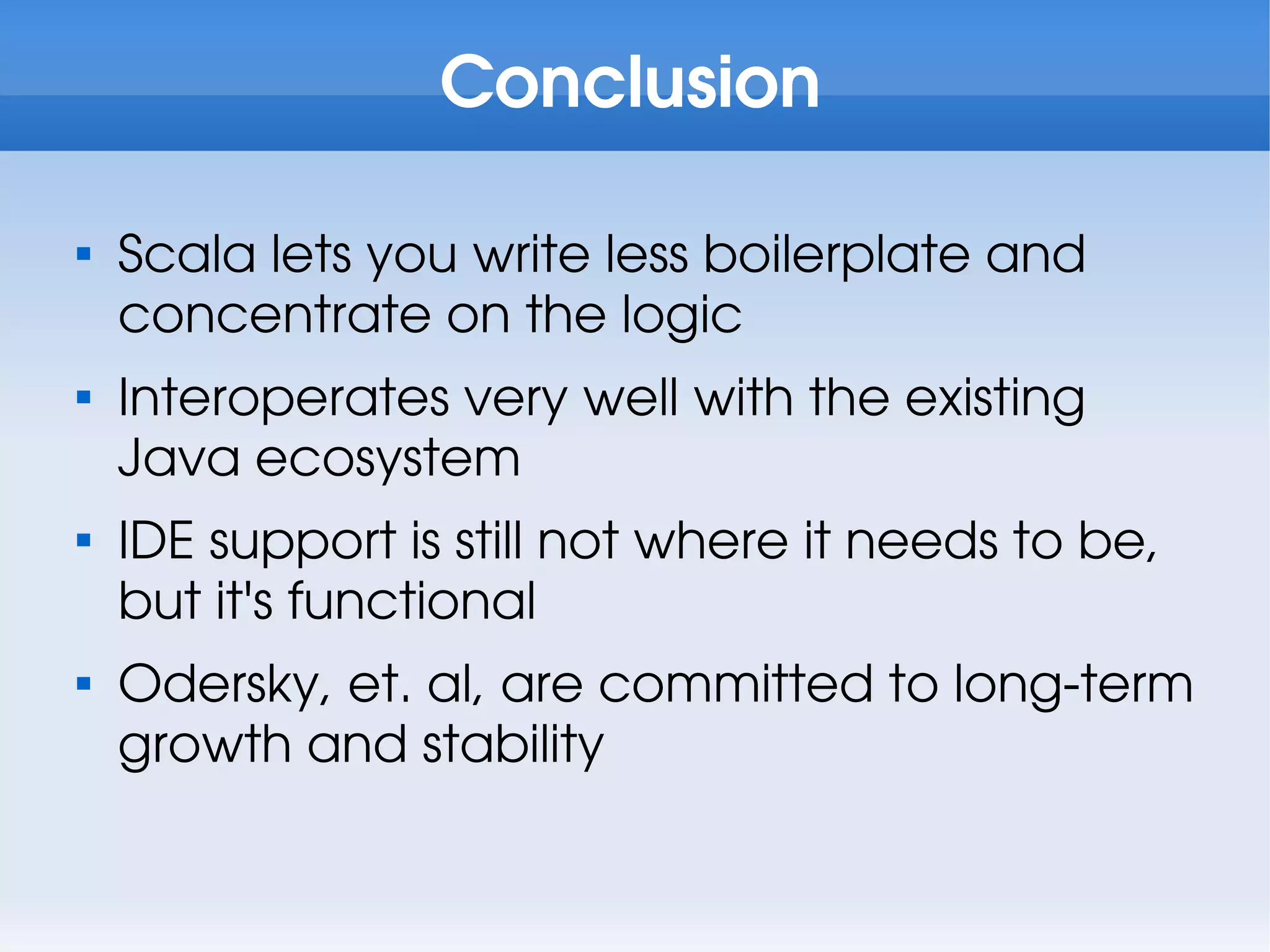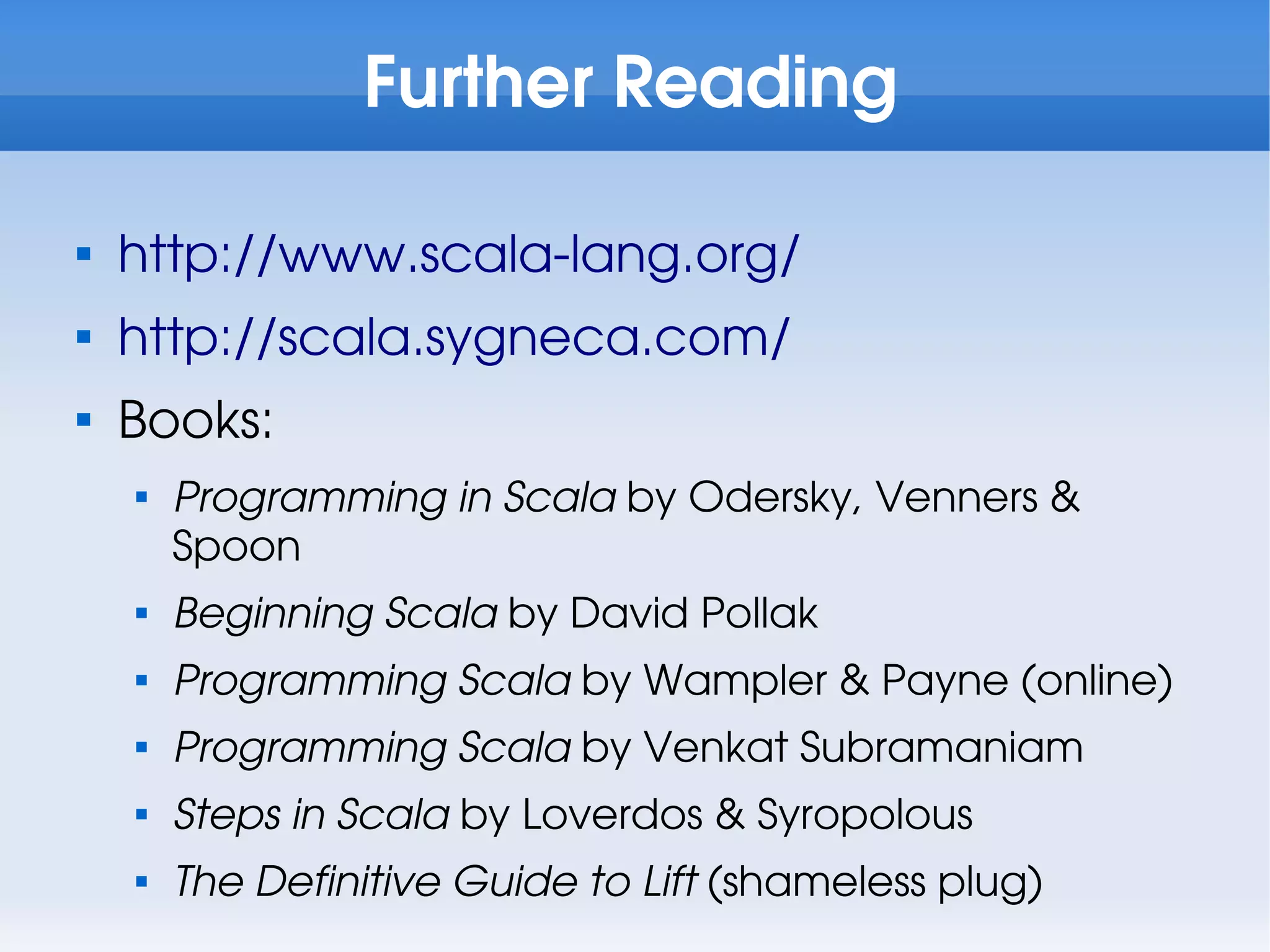This document provides an overview of Scala, a programming language created by Martin Odersky that offers a blend of object-oriented and functional programming features. It highlights Scala's capabilities such as immutability, first-class functions, pattern matching, and its seamless interfacing with Java. The document concludes by noting Scala's boilerplate reduction, solid Java ecosystem integration, and ongoing commitment to development.
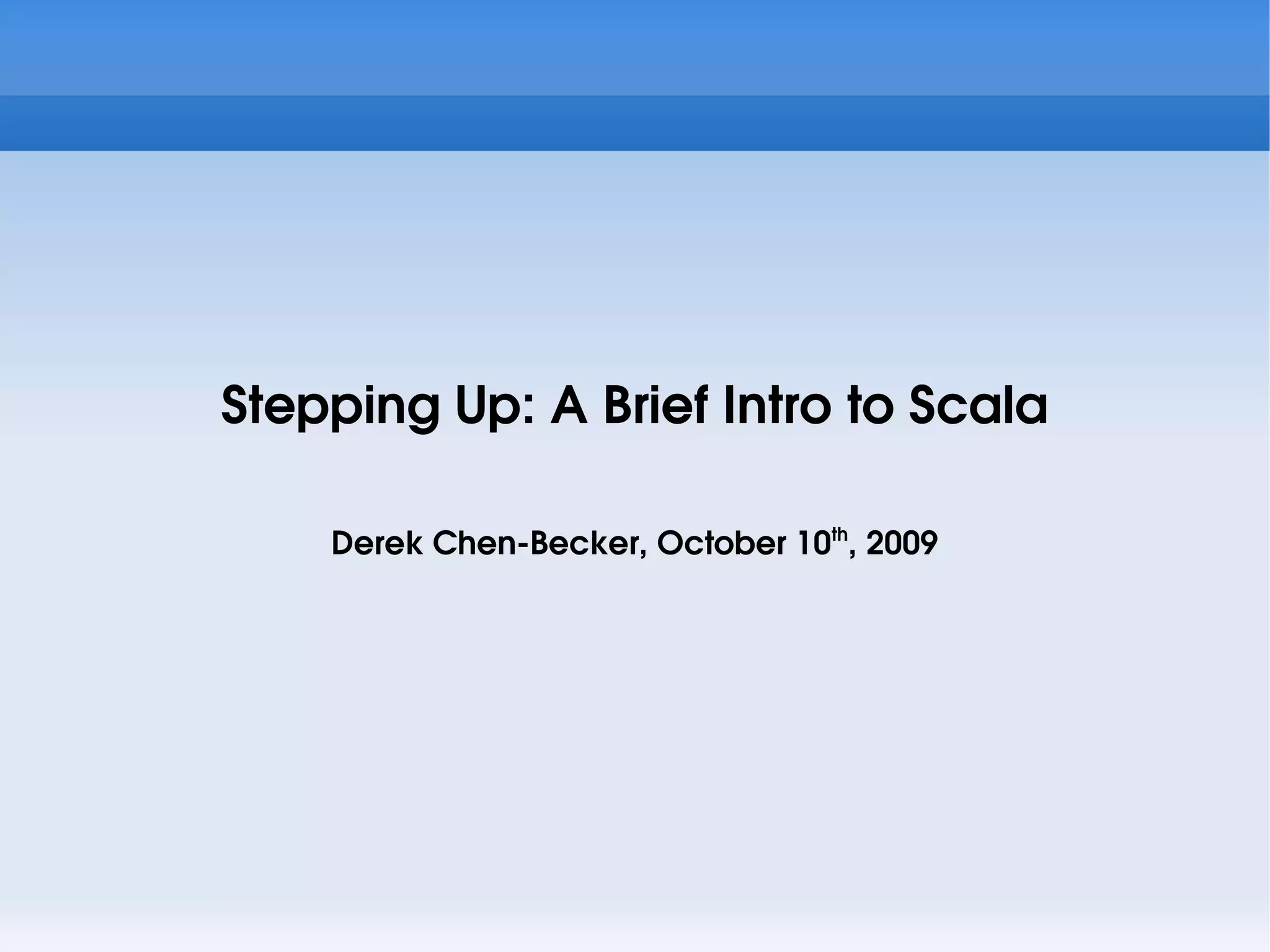
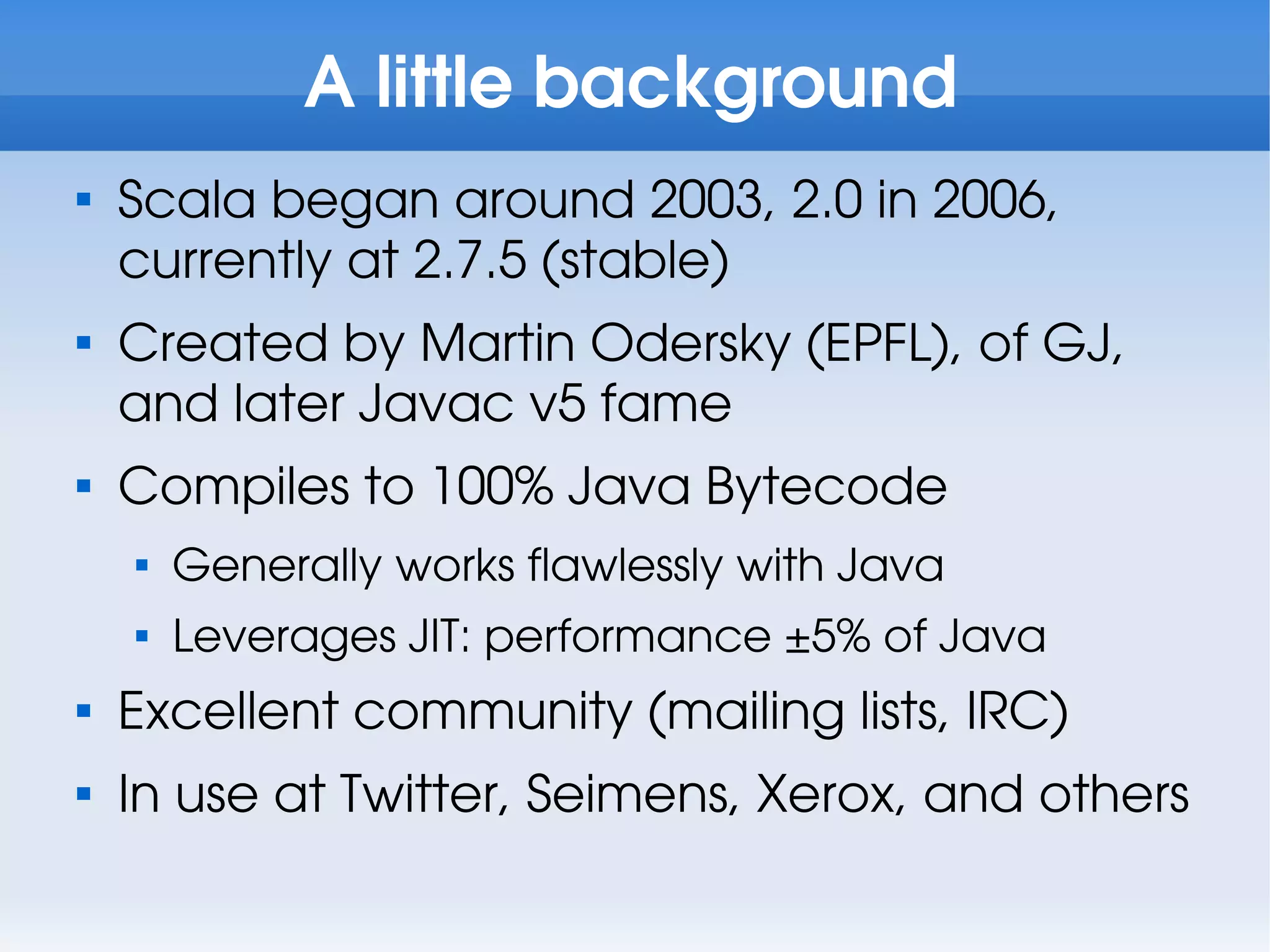

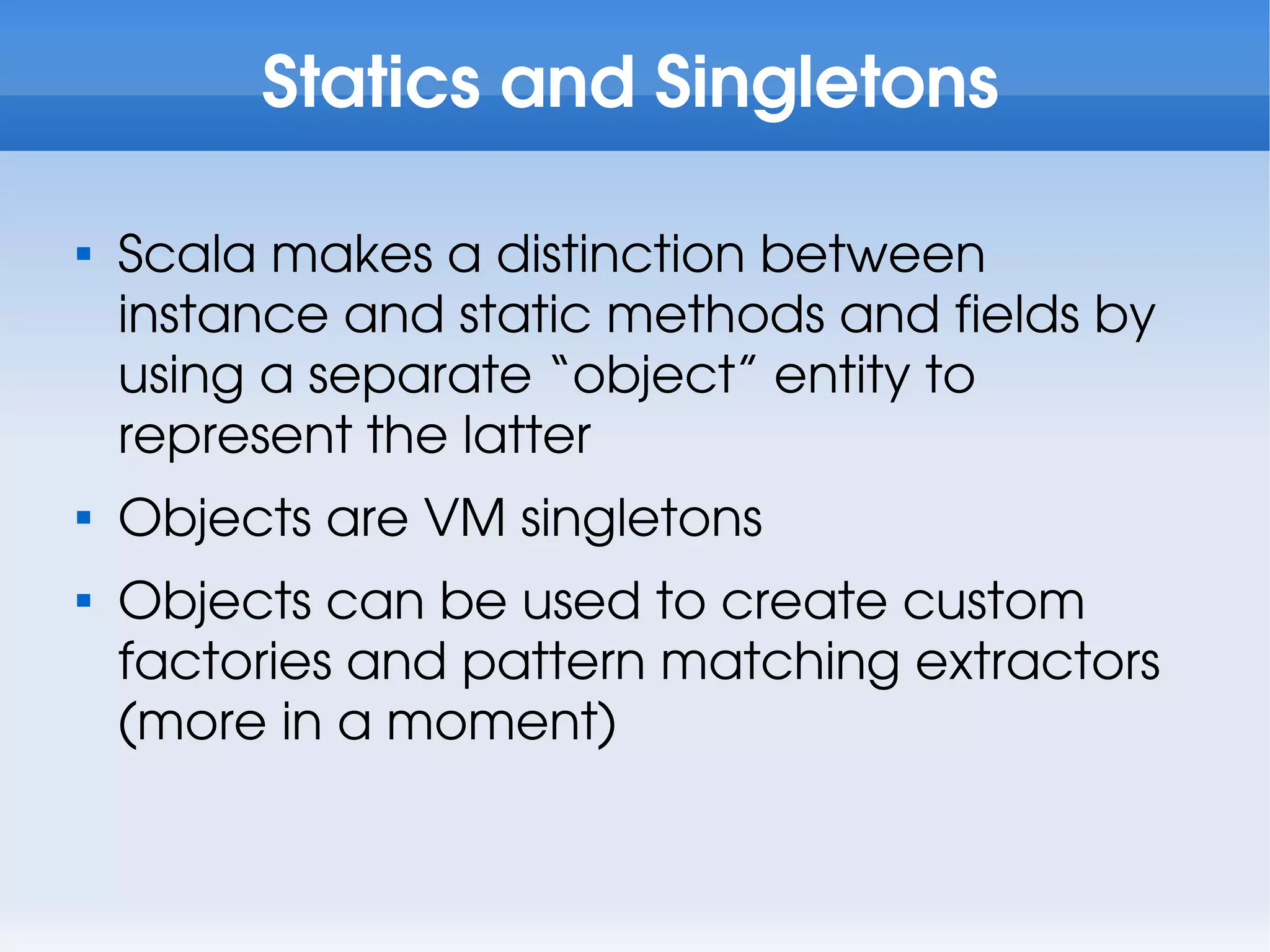
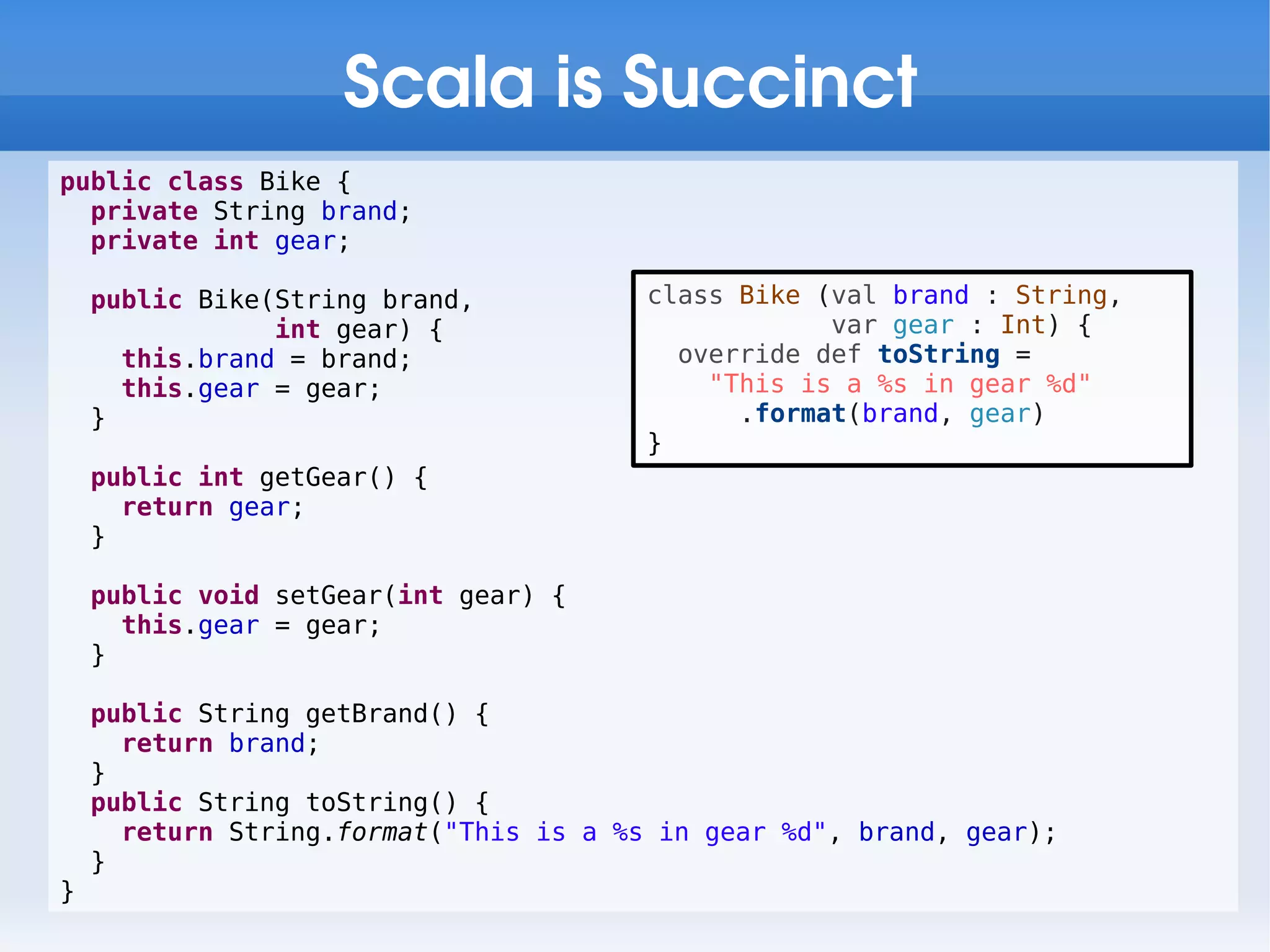
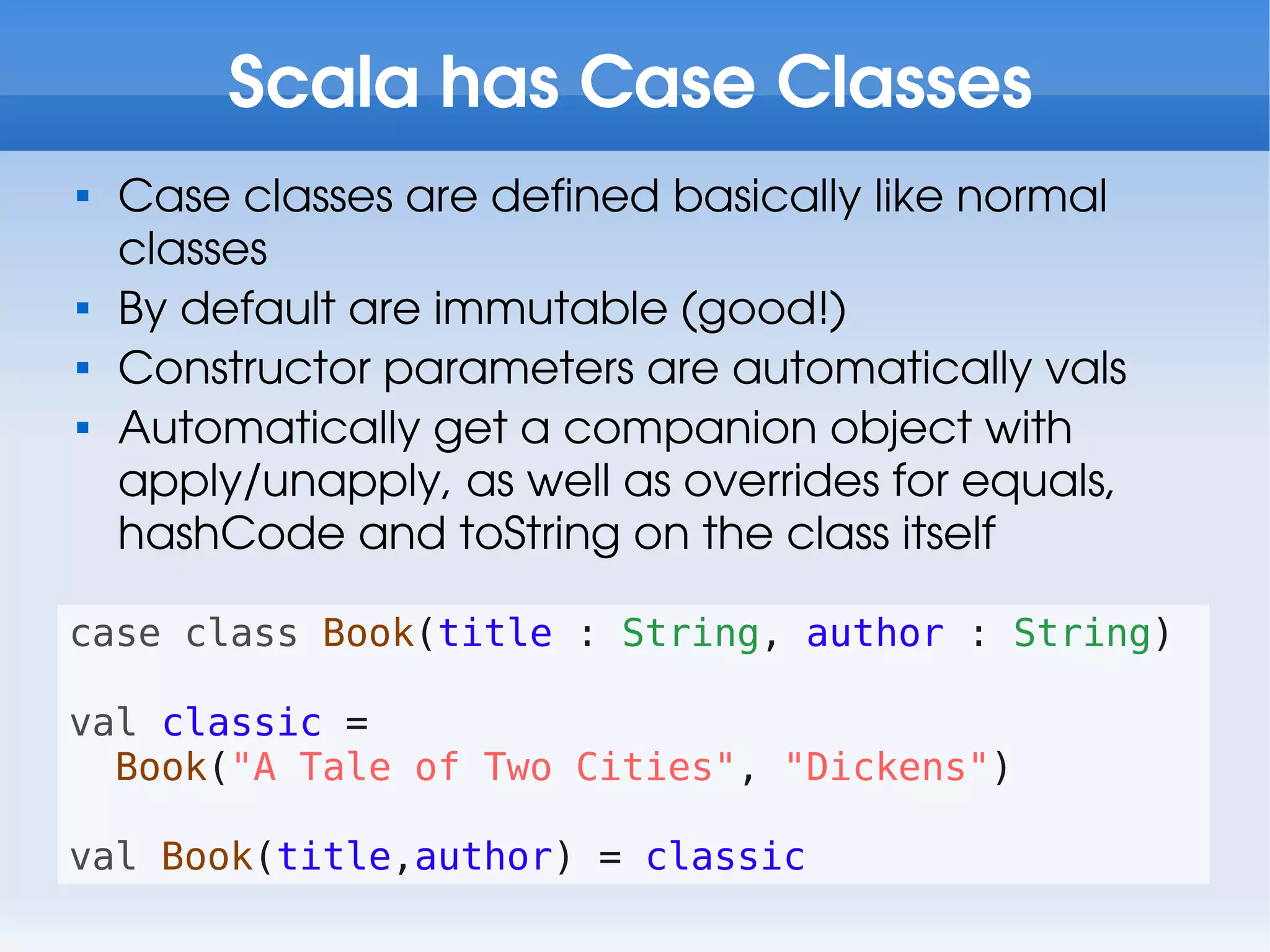


![Scala is Functional, Part 2
Functions (and Scala's type system) allow you
to do things like define new control structures
in a type-safe way:
// Structural typing allows any type with a “close” method
def using[A <: { def close() : Unit }, B]
(resource : A )
(f : A => B) : B =
try {
f(resource)
} finally {
resource.close
}
val firstLine =
using(new BufferedReader(new FileReader("/etc/hosts"))) {
reader => reader.readLine
}](https://image.slidesharecdn.com/developerdaypreso20091010v2-091012184938-phpapp01/75/Stepping-Up-A-Brief-Intro-to-Scala-9-2048.jpg)
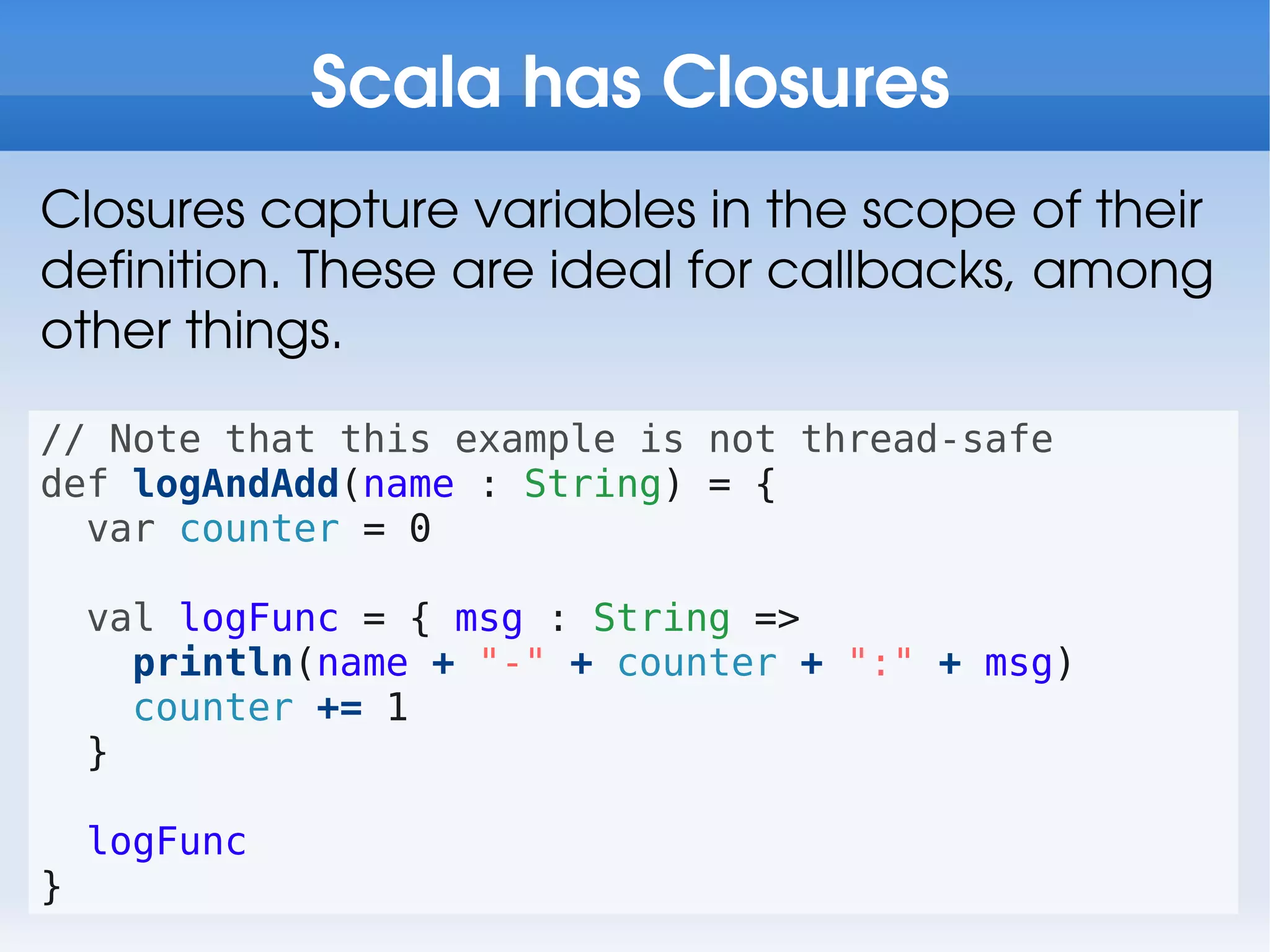
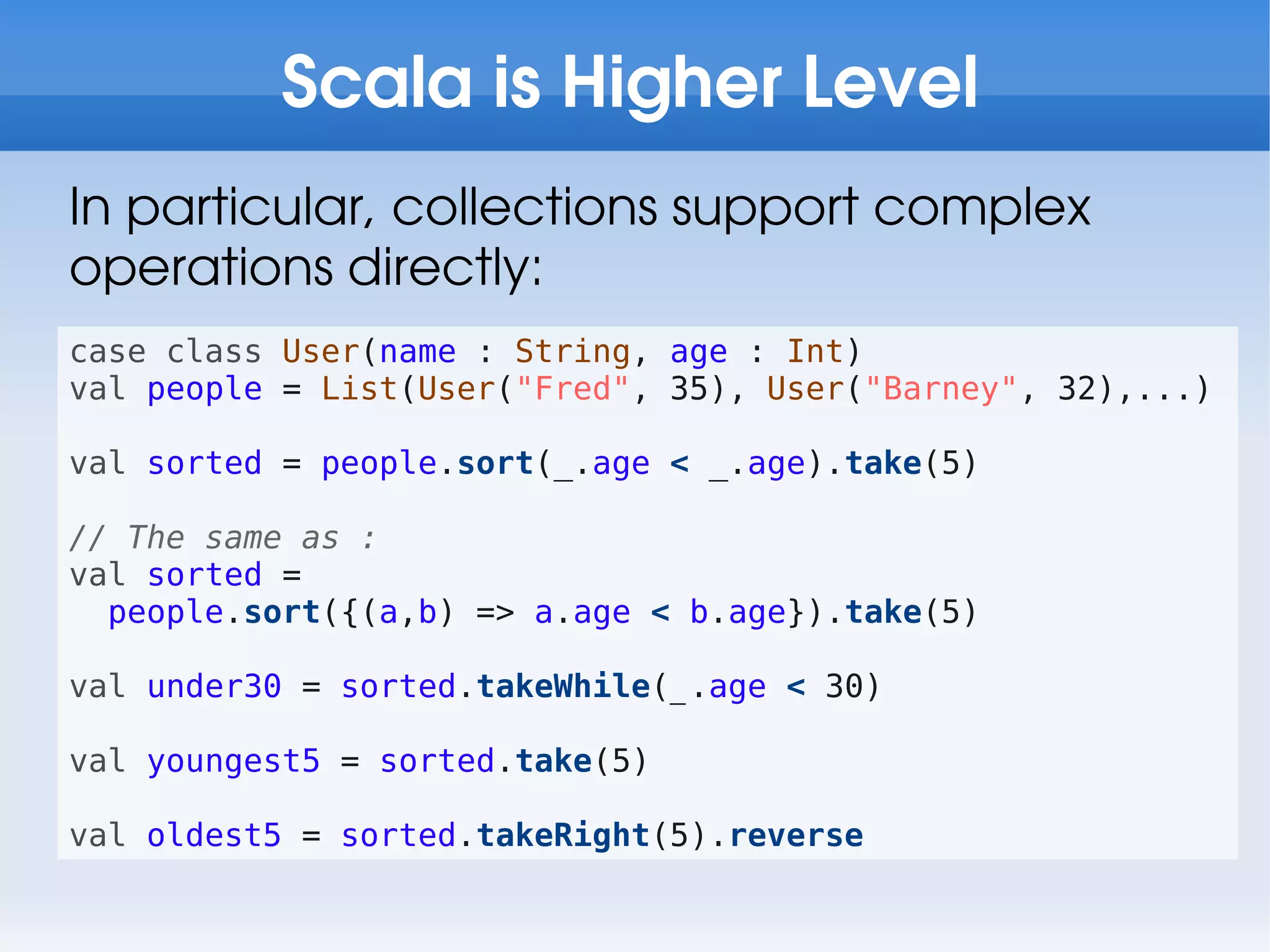
![Scala has For-Comprehensions
For-comprehensions provide an elegant
construct for tying multiple sources and
criteria together to extract information:
val prefixes = List("/tmp", "/work",
System.getProperty("user.home"))
val suffixes = List("txt", "xml", "html")
def locateFiles(name : String) : List[String] =
for (prefix <- prefixes;
suffix <- suffixes;
filename <-
Some("%s/%s.%s".format(prefix, name, suffix))
if (new File(filename)).exists)
yield filename](https://image.slidesharecdn.com/developerdaypreso20091010v2-091012184938-phpapp01/75/Stepping-Up-A-Brief-Intro-to-Scala-12-2048.jpg)
